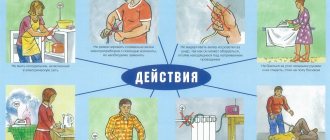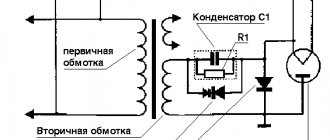Primary requirements
Experienced employees, those who have undergone introductory training, have the appropriate education and qualifications, who know the structural features of the equipment and its functionality, can work independently with such equipment. They are trained in how to perform the necessary work, remember basic safety precautions and are able to provide first aid to victims.
Safety precautions for using various power tools
What are the requirements for them:
- perform the work prescribed by the job description;
- adhere to the specified rules of the routine;
- correctly use personal and collective protective equipment;
- comply with all labor safety regulations;
- If a dangerous situation arises, notify your superiors immediately;
- keep equipment and workplace in order;
- periodically undergo general fire safety training and advanced training courses.
A citizen who works with hand-held power tools is constantly responsible for the condition, functionality and safety of the equipment. Must maintain the tool in normal (working) condition, make timely repairs and replace parts.
Note! If a person accidentally suffers from electric current, be able to provide him with the necessary assistance.
Operator equipment requirements
The appearance of an employee who comes into contact with electrical equipment also matters. Management must provide him with a set of protective clothing: these include special shoes, uniforms, hats and other devices necessary for safe work. They are issued free of charge, in accordance with the standards for issuing workwear and the provisions of the Collective Agreement.
In addition to uniforms and other body protective equipment, employees must be given free of charge:
- protective glasses;
- vibration-isolating gloves;
- durable anti-noise helmets, plugs, headphones;
- dielectric means providing personal protection (galoshes, rugs, boots).
Employees must regularly use the equipment provided and put on all necessary equipment each time they start their shift. Vibration-isolating mittens with other noise-insulating means are used if the level of vibration and production noise at the enterprise is higher than normal.
The dielectric means described above are used for workers who use class I tools or class II-III equipment when performing various installation work. Such equipment is typical for the construction industry.
If an employee’s work involves high heights, for example, when he climbs a building under construction, then the protective kit is supplemented with: a mounting belt, slings, assembly claws and other devices.
Operator protective equipment set
Labor protection requirements before starting work
2.1. Wear the required protective clothing and safety shoes, prepare serviceable and tested personal protective equipment (insulating gloves, galoshes). Do not allow parts of clothing to hang loosely and tuck them in, fasten the cuffs of the sleeves, being careful not to catch them in the rotating parts of the power tool.
2.2. Before the beginning:
— check the lighting of the workplace;
- inspect the workplace, put it in order: remove foreign objects, clear the approaches to it, clean them of debris and remnants of building materials, eliminate the presence of moisture and oil on the floor.
2.3. Before handing over the power tool, check:
— completeness, serviceability, including cable, plug and switch, reliability of fastening of power tool parts;
— serviceability of the grounding circuit of the power tool and absence of short circuit of the windings to the housing;
— operation of the power tool at idle speed.
A power tool that is faulty or has expired its periodic inspection date must not be issued for use.
2.4. Before starting work, check:
— the class of the power tool, the possibility of its use from a safety point of view in accordance with the place and nature of the work;
— compliance of the voltage and frequency of current in the electrical network with the voltage and frequency of current of the electric motor of the power tool;
— operability of the residual current device (depending on operating conditions);
— reliability of fastening of the removable tool.
2.5. For class I power tools, additionally check the serviceability of the grounding circuit (between the machine body and the grounding contact of the plug).
2.6. Working tools, devices and auxiliary materials should be arranged in an order convenient for use and their serviceability should be checked.
2.7. Report any shortcomings noticed in the workplace to the work manager and do not begin work until he receives his instructions.
General instructions on safe work
Safety precautions when working with an angle grinder
Mandatory for all personnel whose work involves the use of electrical equipment:
- Before starting the machine, the operator should check the stability of the mechanism. Remove interfering objects, tighten the legs if it is floor-standing. Portable devices should be located within a comfortable area - in front of the body and above the elbow.
- When several operators work together, each is responsible for his own area and actions must be coordinated.
- Installation, replacement of attachments and other actions are performed after turning off the device from the network. Any movement of parts of a working mechanism is prohibited.
- You can turn on the equipment when it is installed correctly.
- It is prohibited to entrust the device to other persons who do not have the appropriate knowledge and experience.
- Drilling, sawing, and soldering are prohibited inside enclosed spaces where communication networks are laid.
- The equipment cannot be disassembled/assembled or repaired if it is turned on.
- It is prohibited to remove waste chips and small trimmings from under the moving parts of the device when it is turned on. You need to turn off the power, then wait until the operation stops.
- Do not touch moving parts of the equipment with your hands or foreign objects.
- When working, you must be positioned out of reach of machine parts. In case it breaks, so that flying parts do not hit people. This applies to dangerous cutting, piercing, heavy and drilling parts.
- The operator must not drink alcohol or take any drugs before work.
Note! This list of instructions helps to maintain the safety of yourself and other employees.
Changes that affected the section on requirements for production sites
- Now the employer is obliged to install crossing bridges with a width of at least 1 m, fenced on both sides with railings at least 1.1 m high, with continuous cladding along the bottom to a height of 0.15 m and with an additional fencing strip at a height of 0.5 m from the flooring in places of crossing trenches, holes or ditches.
- The requirement to equip external exits of buildings with vestibules or air-thermal curtains has been removed.
- The requirement for the maintenance of passages, stairs, and outdoor areas in winter has changed: now they must be sprinkled with sand.
- The clause on requirements for the design of steps, ramps and bridges was completely cancelled.
- The requirements for the width of passages inside production premises have been simplified. Now it simply must match the dimensions of vehicles and cargo, without additional parameters.
- The clause on requirements for artificial lighting of premises was cancelled. Now it can be at the discretion of the employer (general, local or combined).?
Basic operating rules
Safety precautions when working with an iron
Modern equipment makes it possible to facilitate many processes, however, such mechanisms require special treatment. Any mistake can end tragically. Especially electrical mechanisms. Even a small electrical charge is dangerous, so operators are required to meet a list of requirements that include such personal qualities as attentiveness, caution and calmness.
The rules for using power tools are conventionally divided into three interconnected stages:
- before work;
- during the operation of the equipment;
- after work.
Including a number of basic conditions that are relevant at any stage:
- Checking the tool, its general condition and performance. Inspect its wires for damage or chips.
- Familiarization with the list of requirements described by the device manufacturer.
- Checking the current equipment grounding level.
- Studying wires - how effective their insulation is. A power plug and a special protective tube will help.
- Storage of equipment in dry rooms protected from precipitation; registration and accounting of all types of equipment is required. Each one has a separate document.
Safety precautions also apply to age criteria. Only adult citizens who have undergone TB and have the appropriate skills, education and experience can work with such tools. These conditions are described in GOST and other regulations.
Types of protective gloves
Safety rules before starting work
When starting a shift, an employee working as a power tool operator must:
- clean the workspace, removing everything unnecessary (garbage, dust, unnecessary parts);
- check the external condition of the motor windings (using a triangle, then a star);
- study the technical condition of your power tool, wiring and reliability of grounding at the equipment housing;
- availability, condition and serviceability of your gloves, protective suit and rubber mat.
Next, he follows the points of the service instructions.
Carrying out the workflow
It is important to remain attentive, work slowly and remember the tasks at hand. Monitor the serviceability of the supply wires and the level of electrification of the tool. Do not allow cords to be twisted, pinched or looped.
It is prohibited to install wire networks:
- under driveways;
- access roads;
- places where materials are stored.
Replace old and frayed wires in a timely manner.
Safety measures after completion of work
The end of the procedure is also important:
- make sure that the device is completely turned off;
- wait until all moving parts freeze completely;
- clean shavings and other material remaining after work;
- disassemble (if necessary) the tool.
Important! It is forbidden to leave the device turned on without attention!
Regulatory framework for regulating the rules of operation of the tool
The main legal document that establishes the general principles of labor activity of workers and employers in the field of compliance with industrial safety rules is now Federal Law No. 116-FZ. These principles are disclosed and specified in additional regulatory documents. The main one is the approved order of the Ministry of Labor dated August 17, 2015 N 552n, which has been applied in Russia since 2015. It establishes the applicable rules for workers whose work activity involves the operation of production equipment and tools.
The regulatory document in question was revised only once - in 2022, when Order of the Ministry of Labor dated December 20, 2022 N 826n was adopted, introducing certain changes to the text of the rules in force on that date. Such changes were associated with the process of harmonization of Russian legislation in the field of compliance with industrial safety rules and similar requirements that are established on the territory of the Eurasian Economic Union, of which Russia is a member. The new sections of Order No. 552n were associated with the introduction into the text of the legal act of the rules established by the technical regulation CU 010/2011, dedicated to the safety of operation of machinery and equipment.
Safety requirements in emergency situations
Safety precautions when working on a drilling machine
Stop the workflow immediately if:
- damage (even minor) to the plug connection, the cable itself or its protective tube;
- The brush holder cover is broken;
- the functionality of the switch is impaired;
- sparks appeared from the brushes at the commutator, which caused a circular fire on the surface;
- grease leaks from under the gearbox/ventilation ducts;
- smoke and an unpleasant odor appeared, indicating that the insulation was burning;
- increased noise, vibration or loud cracking;
- body parts are broken, cracks have appeared, the handle is damaged;
- the whole instrument was broken.
You cannot work if it starts to rain/snow outside. If an emergency occurs, the first step is to remove the victim, drag him away and provide the necessary medical assistance.
If a fire occurs at work:
- stop work, turn off the tool immediately;
- move the device and other equipment further away;
- inform the manager immediately about what happened, call security and firefighters;
- armed with fire-fighting devices, begin to extinguish the fire.
The main safety measure when working with power tools is to disconnect the device from the current if a dangerous situation arises. Then release the victim and provide him with the necessary assistance.
Labor protection requirements during work
3.1. When working with power tools, do not allow wires and cables to come into direct contact with hot, wet or oily metal surfaces or objects.
3.2. It is not allowed to pull, twist or bend the cable, to place a load on it, or to cross it with cables, cables and gas welding hoses.
3.3. Devices should be used to suspend the power tool if its weight, which can be supported by the operator’s hands, exceeds 10 kg.
3.4. It is necessary to handle power tools with care, not to expose them to shocks, overloads, dirt or oil products.
3.5. When working with power tools, it is prohibited:
— connect a power tool with a voltage of up to 50 V to a public electrical network through an autotransformer, resistor or potentiometer;
— bring inside containers (drums and furnaces of boilers, transformer tanks, turbine capacitors) a transformer or frequency converter to which a power tool is connected. When working in underground structures, as well as during excavation work, the transformer must be located outside these structures;
- pull the cable of the power tool, place a load on it, allow it to intersect with cables, electric welding cables and gas welding hoses;
- work with power tools from random stands (window sills, drawers, chairs), on ladders and stepladders;
— remove shavings or sawdust by hand (shavings or sawdust should be removed after the power tool has completely stopped using special hooks or brushes);
- handle icy and wet parts with power tools;
- leave a power tool connected to the network unattended, as well as transfer it to persons who do not have the right to work with it;
- independently disassemble and repair (troubleshoot) power tools, cables and plug connections.
3.4. If the power tool suddenly stops (loss of power in the network, jamming of moving parts, etc.), it is necessary to turn it off with the switch.
It is necessary to disconnect the power tool from the electrical network using the plug:
— when changing the working tool, adjusting it and installing attachments;
— when moving a power tool from one workplace to another;
- during a break from work;
- at the end of work or shift.
3.5. The workplace should be kept clean and scattered (spilled) objects, materials and substances should be removed from the floor in a timely manner.
Obstruction of the workplace, passages and driveways is not allowed.
3.6. If a malfunction of a power tool is detected during operation or the employee feels at least a weak current, work should be stopped and the faulty tool should be returned for inspection and repair.
3.7. Drilling holes and punching grooves in walls, panels and ceilings in which hidden electrical wiring may be located, as well as performing other work that may damage the insulation of electrical wires and installations, should be done after disconnecting these wires and installations from power sources. In this case, it is necessary to take measures to prevent the sudden appearance of voltage on them.
Use tools with insulated handles.
Drilling work and punching grooves in places where hidden electrical wiring is located should be carried out by electrical personnel or under their supervision and with the execution of a work permit, in which it is necessary to indicate the layout of hidden electrical wiring and pipelines, as well as safety measures when performing work.
3.8. Drilling work, which may damage hidden pipelines, must be carried out after they have been closed.
3.9. When using a drilling machine, the workpieces should be firmly secured in a vice.
It is not allowed to work with drilling and other rotating power tools while wearing gloves.
In the process of working on a drilling power tool, you should install the drill in the place previously marked with a core, then turn on the power tool and feed the drill by pressing the handle. Press evenly until the end of drilling.
If a drill bit becomes stuck in a hole, stop the power tool, remove the drill bit, clean the hole, and then continue working.
When drilling through holes at the end of the work, the pressure on the tool should be reduced.
3.10. When working with a grinding tool, the wheel should be evenly moved along the surface of the material being processed in the lateral direction.
3.11. Do not turn on the equipment if there is a prohibiting safety sign on the control panel with the explanatory inscription “Do not turn on - people are working!” Only the employee who installed it can remove it.
3.12. It is prohibited to operate a power tool that has expired its next test period.
3.13. The power tool should be stored in a dry room equipped with special racks, shelves and drawers that ensure the safety of the power tool, taking into account the requirements for the storage conditions of the power tool specified in the technical documentation of the manufacturer.
3.14. It is prohibited to store power tools without packaging in two or more rows.
Working with a power saw and protection rules
These tips will help beginners and experienced users:
- If the saw is a chain saw, cross cutting is considered safe; you should not cut lengthwise, as this will heat up the chain.
- Monitor the position of the cable so that the wire does not get caught in the circuit.
- A special brake will help if an unexpected situation arises.
- It is necessary to hold the stop with the teeth on the surface of the wood.
- Pinching the chain, getting it stuck in the wood is dangerous and can cause a rupture.
- Strangers should not be allowed close, especially in the area opposite the torus of the running saw.
- It is dangerous to pass on a powered instrument to another.
- If malfunctions occur, turn off the saw immediately and have it repaired.
Important! Strong hands must be used to hold the device; it is dangerous for physically weak people.
Electric saw - description of tool parts
Working with an angle grinder
An angle grinder is a dangerous mechanism and therefore requires care. People who are uncollected, unsure or “squint-handed” should not touch it:
- A protective cover, gloves, and thick glasses must be put on before work. Instead of glasses, a closed mask may be used.
- You can only use the “native” removable circle. It is dangerous to install a large circle on a small grinder, because it rotates much faster. Damaged circles are also excluded.
- The installation of saw blades used to cut wood is prohibited.
- After starting, you need to check the operation of the angle grinder for one minute, holding it suspended. Run normal and maximum rotation modes.
- Hold the tool firmly with both hands and take a secure position.
- When moving, always turn off the grinder.
- Turn off the tool if there is a short circuit.
Cut while maintaining the direction of rotation. So that the direction of movement and rotation always coincide. Release the grinder when it has completely quieted down after turning off.
Grinder - description of tool parts
Passage of current
The damaging factor is greatly influenced by the path along which the current passes through the human body. The most common options are from hand to hand (1 in Fig. 2), from leg to leg (7) and through arms and legs (2-6, 8, 9).
Paths of electric current flow through the human body
The greatest threat to life occurs in cases where the organs responsible for the body's vital functions (for example, the heart or brain) are in the path of current flow through the human body. This occurs when passing through arms and legs (2-6, 8, 9), from arm to arm (1), and also through the head to arms (10, 13, 14) or legs (11, 12, 15). Accordingly, the less dangerous path is from foot to foot (7). The latter option is typical for damage caused by step voltage.
Working with an electric drill
The basic safety requirements are similar to those described above:
- Monitor the position and external condition of the cord, leaving it out of reach of the tool nozzle.
- Before work, check the surface itself to see if electrical wiring is installed there.
- Protect your ears by wearing headphones, antiphons or good earplugs. The tool is very noisy, which is harmful.
- Hold the tool level with both hands, holding it securely in one position.
- Release after the drill has completely stopped rotating after turning off.
- Before work, put on a tight-fitting protective suit, remove hair and clean the work area. Put on a respirator.
The main thing is to take it seriously, take your time and follow the manufacturer's recommendations.
Schematic illustration of an electric drill









